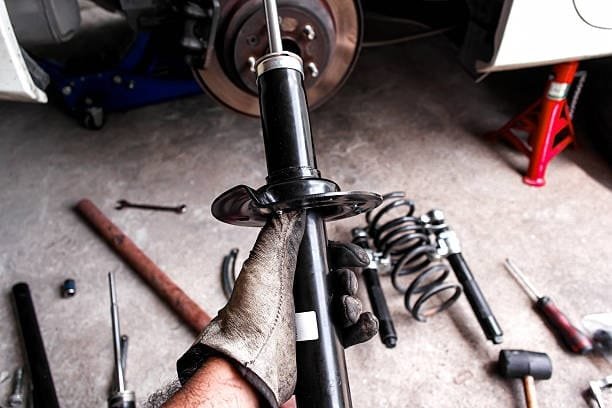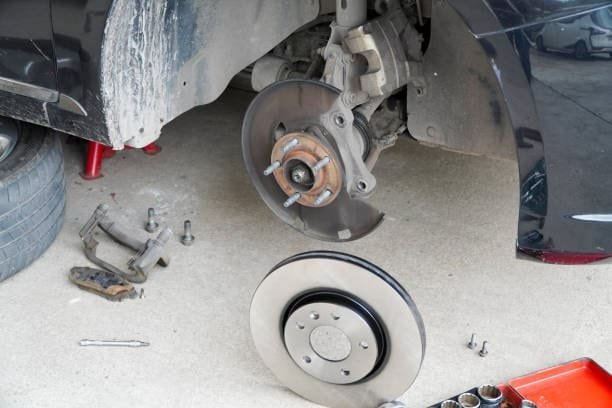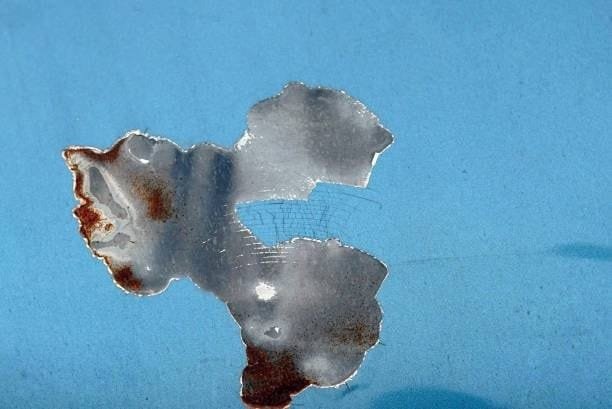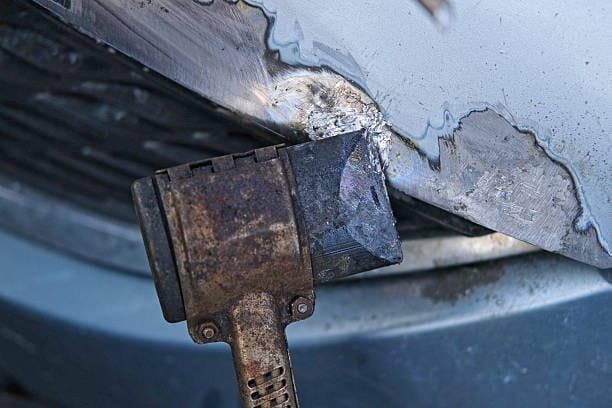Understand all about the material removal rate (MRR) in machining procedure. Get to know how to compute, influencing factors of MRR, how to optimize calculations and on better manufacturing industry productivity and cost efficiency.
What is Metal Removal Rate?

Metal removal rate (material removal rate mrr) is the amount of workpiece material removed to the unit time during a time of machining. It is a very critical manufacturing parameter that gauges the effectiveness of cutting operations and directly affects the production costs, cycle time and the manufacturing productivity in general. Knowledge of MRR is necessary to optimize the machining activities and to attain competitive manufacturing processes.
Metal removal rate is a basic measure that can be calculated and used in the present-day modern manufacturing industries and it provides the operator and engineers with the ability to determine how efficient the machining process under consideration is. The information obtained after measuring the amount of material being removed in a given time can be used by the manufacturers to make sound decisions regarding tooling, cutting parameter, and process optimization strategies.
Mathematical Definition and Calculation

The material removal rate formula is mathematically represented as the product of the volume of the material to be removed and the time needed to remove them. The simplified formula is that MRR = Volume/Time, with volume normally measured in cubic millimeters or cubic inches with time also measured in minutes. The calculation is used to compare various machining jobs and the efficiency of these jobs in a common way.
When the workpiece is in cylindrical shape, the expression can be more concrete: MRR = pi x D x f x d, with D being the diameter of the piece, f the feed, d the depth of cut, and considering the axial depth. This formula shows that a geometric factor and cutting parameters of cutting directly affect the removal rate.
Units of Measurement

The rate of metal removal is usually in different units which vary based on the applications and the regions of interest. The most common are cubic millimeters per minute (mm 3/min), cubic inches per minute (in 3/min), and cubic centimeters per minute ( cm 3/min). Production plants tend to standardize on certain units so that they maintain a certain level of consistency across the functions and departments, ultimately saving money .
The use of imperial and metric units of measurement may be necessary, especially in international manufacturing activities, and an engineer should therefore be at a position to comprehend the unit relationship in the two measurement systems. Unit selection and accurate accuracy of conversion is the key to effective process optimization and quality control.
Factors Affecting Metal Removal Rate
Various interacting factors lie in determining metal removal rate during machining processes, making it a direct indicator of overall machining efficiency . The most notable variables include cutting speed, feed rate and depth of cut that operators can exercise direct control over. Cutting speeds however, tend to increase MRR but they can deteriorate tool life and surface finish. In the same way, higher feed rates and deeper cutting increases the removal rates but may affect dimension accuracy and surface quality.
The physical properties of the workpiece materials have a major effect on the possible removal rates. The harder materials usually need a slower cutting speed and more conservative parameters, and they lead to lower values of MRR. Material machinability ratings assist to foresee the ideal cutting conditions and approximations of the anticipated removal ratios of various alloys and types of material in a grinding operation .
Tool Geometry and Material Impact

All the aspects of cutting tool geometry are very significant when it comes to defining capabilities on twisting metals. Tool rake and relief angles, and cutting edge shape influence chip shapes and cutting forces, and this directly limits the maximum removal rates that can be achieved. A typical example is that positive rake angles tend to increase the level of cutting performance and allow raising the removal level, and a negative one gives a stronger tool when making interrupted cuts.
MRR could be largely influenced by the material chosen as the tool. Carbide tools generally allow greater cutting speeds and removal rates (than high-speed steel tools) and the ceramic tools and cermet tools allow even higher capabilities to remove material in specialized applications. Tool coatings at an advanced stage also have the capability to induce more performance through a lower friction coefficient and longer tool life with an increased removal capacity.
Machine Tool Considerations
The nature of machine tools forms the basis of realizing the ideal metal cutting rates. The maximum cutting parameters are dependent on the characteristics of spindle power, rigidity and the ability to respond dynamically. Lack of machine power restricts removal rate by restricting depth of cut and rates of feeding, directly restricting the removal rate and affecting how much material can be processed .
MRR optimization strategies are also affected by the accuracy and repeatability of the machine tools, which is crucial for optimizing material removal rates . The aggressive cutting parameters can be utilized and the dimensional tolerances can be achieved using high-precision machines, maximizing productivity with the maximum quality. Machine dynamics and vibration control systems help to attain steady cut conditions with greater removal rates.
Cutting Fluid and Coolant Effects
Coolants and cutting fluids and coolants play a significant role in the metal removal rate capacities given that they control heat build up and expulsion of chips. The use of coolants, selection of the right coolant allows increasing the cutting speed and removal rate without sacrificing the work life of the tool and quality of products. Both the Flood cooling and the mist cooling along with high-pressure coolant systems have different advantages and are adapted to varying removal rates.
Although cost savings associated with dry machining operations offer a saved coolant cost; the operations normally involve more restrictive cutting parameter and less removal rates. Nevertheless, with high-tech grinding tool dressing and improved cutting routines, conditions may be created so that reasonable removal rates may be obtained with dry machining and the necessary intervention in the environment and costs associated with the process may be minimized.
Optimization Strategies

There is a formula of optimizing metal removal rate which is a combination of productivity, quality, and cost calculations. A typical example is that design of experiments (DOE) approaches are useful concentrating on the most fittings cutting parameters combinations to particular applications. Multi-objective optimization takes into account removal rate, tool life, surface quality and dimensional accuracy so that best overall performance can be obtained.
Adaptive control systems facilitate actual-time manipulation in the machining process or optimization of cutting parameters depending on the monitoring results. The systems help in automatically varying the feed rate, speeds and other parameters to ensure maximum removal with the inhibition of tool damage or quality problems.
Applications in Different Industries
The problem of optimization of metal removal rate is used throughout a variety of industrial manufacturing sectors that differ in terms of requirements and limitations. Aerospace manufacture requires aerosol manufacturing processes high removal rates of aluminum and titanium parts and also requires tight dimensional tolerances and surface requirements. Automotive production focuses on affordable removal rates of mass production of iron and steel parts.
Manufacture of medical devices needs astitute control of the rates of removal to realize desired micro-precision of implants and surgical tools. The use of oil and gas industries is concerned with the large-scale machining rate of raw material like high-strength alloys, as well as special materials.
Turning Operations

During the calculation of metal removal rate in turning operations, parameters used include relation between cutting speed, feed rate and depth of cut. There is a direct correlation between the removal rate and spindle speed as well as workpiece diameter ensuring that the two parameters are optimized to achieve the highest level of efficiency. To calculate mrr correctly, rough turning is usually optimized to give high removal rates whereas finish turning is optimized to give high surface quality rather than high removal rates.
Multi-pass turning techniques compromise between the removal rate and dimensional accuracy through roughing passes that are aggressive and light finishing passes. The use of this method ensures maximum productivity and allows meeting the demanded quality of the surface to be achieved in addition to the required tolerances down the line.
Milling Operations
Milling operations create special optimization problems of removal rate, because of the discontinuous cutting action and presence of multiple cuts edges. The removal rates with face milling are normally higher than those experienced with the use of end mills owing to the cutting load, which is distributed on a variety of inserts. Climb milling as compared to conventional milling strategies influence the removal rate and surface quality standings.
Very high spindle speeds in conjunction with vigilantly formed tool paths using high-speed milling methods allows extraordinary removal rates in soft materials such as aluminium. Adaptive milling methods change the cutting parameters relative to the material engagement, and keep the removal rates constant all the way through intricate shapes.
Drilling and Boring Operations
The removal rate must be given a lot of consideration during drilling processes so as to avoid clogging of chips and unnecessary production of heat. Optimization in removal rates are especially useful in deep hole drilling applications, where compromise between chip-removal need at the tool periphery and ability to drill fast must be achieved. Special drilling methods such as peck drilling are used to control rates of removal in difficult drilling tasks.
Boring Controlling dimensional accuracy at the expense of maximum removal rate can be the norm with boring, with both rapid parameter selection and careful parameter selection necessary to obtain the required tolerances. Sequential boring using rough boring and finish boring offers a great way of balancing between the removal rate and dimensions.
Surface Quality Considerations
Metal removal rate should be optimized with the view of effects on the surface quality and tolerances. Increase of surface roughness and even dimension variability may be caused by higher removal rates. Being able to understand the correlation between removal rate and surface quality enables manufacturers to identify the right parameters to use in given application.
The removal rate can affect surface integrity elements such as work hardening, microstructure alteration and residual stress. The optimization of parameters is done with due care not to slip and have the productivity increase of higher removal rates tamper with the surface quality essentials.
Tool Life and Cost Analysis
The plot of metal removal rate variable against tool life is the problem of critical optimization in manufacturing. The increase in removal rates normally decreases tool life as a result of the increment in cutting force and temperature. Economic analysis should take into consideration of higher productivity and replacement costs of the tools to know the best operating parameters.
Tool cost, machine time, and quality should also be factored to calculation total cost per part to determine optimum settings to achieve most economical removal rates. The advanced tooling allows the removal rates to be increased with acceptable tool life; the analysis of the life cycle cost is used to argue the investment case.
Quality Control and Monitoring
Wages of good quality control procedures include the tracking of consistency of removal rate and process effect on the part quality. Techniques of statistical process control will aid in the process of detecting any existing variation in the removal rate that may signify tool wear, machine problems, or the material differences. Before quality issues take place, real-time monitoring systems may help guide operators about deviations to the removal rate.
High-tech monitoring systems give information on the opportunity to optimize the removal rate: the vibration analysis system, the acoustic emission monitoring system, the cutting force measurement system. The systems also allow predictive maintenance practices to sustain the best removal rates all through tool life.
Modern Technology Integration
The next generation of metal removal rate optimization reduces to industry 4.0 technologies enabling improved data analytics and machine learning based methods. By gathering and examining the data on removal rate, smart manufacturing systems find the possibilities of optimization and define the best cutting parameters in new applications.
The virtual optimization of the parameters of the removal rate is possible with the help of digital twin technology, as a consequence of which the changes are conducted at real production equipment. This method saves the time of trial and error optimization, and at the same time lowers the possibility of disrupting the production process when parameter development is underway.
Future Trends and Developments
The next direction of metal removal rate optimization is facing intelligent manufacturing systems capable of automatically adapting cutting parameters according to the current feedback of the occurring process. No predictive optimization (based on past experience and process monitoring) of removal rates will be possible, but artificial intelligence and machine learning algorithms will allow predictive optimization of removal rates.
This will be advanced with the use of materials provided by new technologies such as advanced coating technology to be able to reach superior removal rates with regard to tool life and part performance. The compatibility of additive manufacturing can produce hybrid processes that could allow both high removal rate and near-net-shape recycling.
Environmental and Sustainability Aspects
Optimization of removal rates In removal rate optimization, environmental aspects are becoming highly significant. Dry machining and minimum quantity lubrication Dry machining and minimum quantity lubrication techniques are methods that seek to obtain satisfactory removal rates, coupled with minimizing environmental impact. Energy efficient machining strategies aim at making optimum removal rates such that less power is consumed on a given unit of material removed ideal feed rate.
Sustainable manufacturing technologies take into consideration the whole lifecycle effect of removal rate actions such as wastage of materials, energy costs and the prices of disposal. Green manufacturing trends result in the formation of an eco-friendly optimization strategy between productivity and being environmentally responsible.
Conclusion
Metal removal rate is a basic indicator of the efficiency of production and it directly involves the productivity, costs and competitiveness higher mrr’s. Awareness of these interactions leaves manufactures able to tailor their efforts to greatest effectiveness by interrelating relationships among cutting parameters, tool choices, machine adjustment and material qualities. The new interchange of monitoring technologies and smart control systems are fulfilling the science of optimization of removal rates.
To achieve successful application of removal rate optimization, a global approach is necessary in the consideration of quality, cost and sustainability aspects among others besides the productivity objectives given period. Due to the ongoing changes in manufacturing technology, competency related to effective optimization of metal removal rates will help prevent tool failure and be important to competitive manufacturing operations in the future radial depth.

